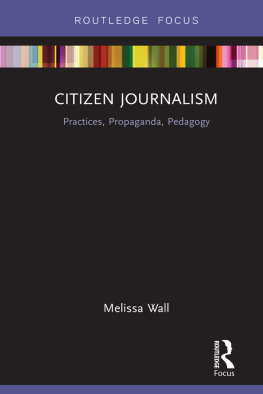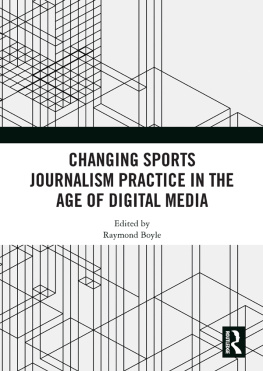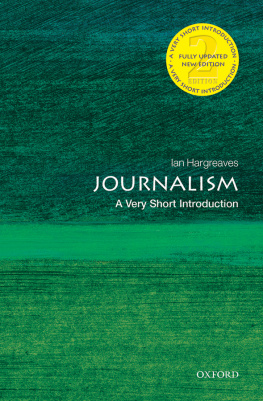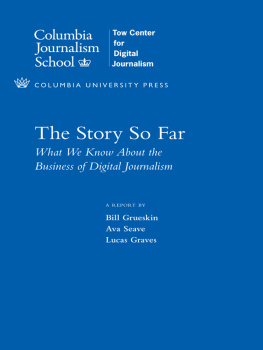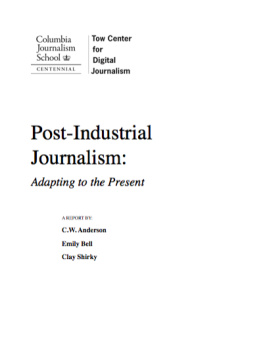Stephen B. Shepard - Deadlines and Disruption: My Turbulent Path from Print to Digital
Here you can read online Stephen B. Shepard - Deadlines and Disruption: My Turbulent Path from Print to Digital full text of the book (entire story) in english for free. Download pdf and epub, get meaning, cover and reviews about this ebook. year: 2012, publisher: McGraw Hill LLC, genre: Politics. Description of the work, (preface) as well as reviews are available. Best literature library LitArk.com created for fans of good reading and offers a wide selection of genres:
Romance novel
Science fiction
Adventure
Detective
Science
History
Home and family
Prose
Art
Politics
Computer
Non-fiction
Religion
Business
Children
Humor
Choose a favorite category and find really read worthwhile books. Enjoy immersion in the world of imagination, feel the emotions of the characters or learn something new for yourself, make an fascinating discovery.

- Book:Deadlines and Disruption: My Turbulent Path from Print to Digital
- Author:
- Publisher:McGraw Hill LLC
- Genre:
- Year:2012
- Rating:4 / 5
- Favourites:Add to favourites
- Your mark:
Deadlines and Disruption: My Turbulent Path from Print to Digital: summary, description and annotation
We offer to read an annotation, description, summary or preface (depends on what the author of the book "Deadlines and Disruption: My Turbulent Path from Print to Digital" wrote himself). If you haven't found the necessary information about the book — write in the comments, we will try to find it.
A Top Editors Take on the State of Journalism Todayand His Prescient Forecast of Its Future
This is a personal and insightful book about one of the most important questions of our time: how will journalism make the transition to the digital age? Steve Shepard made that leap bravely when he went from being a great magazine editor to the first dean of the City University of New York journalism school. His tale is filled with great lessons for us all.
Walter Isaacson, bestselling author of Steve Jobs
An insightful and convivial account of a bright, bountiful life dedicated to words, information and wonder.
Kirkus Reviews (Starred Review)
This is two compelling books in one: Shepards story of his life in print journalism, and a clearheaded look at the way journalism is evolving due to electronic media, social networking, and the ability of anyone with a computer and an opinion to make him- or herself heard.
Booklist
Shepards book will resonate with many and should be read by anyone interested in the flow of information today and its simpact on society as a whole.
Library Journal
The book is in part a memoir, a tale of a life lived at the height of print journalism when print journalism itself was at its height. But it is also an analysis, an examination of the new challenges facing an old industry as it ambles and occasionally sprints its way into the digital age.
The Washington Post
About the Book:
My personal passage is, in many ways, a microcosm of the larger struggle within the journalism profession to come to terms with the digital reckoning. Will the new technologies enhance journalism . . . or water it down for audiences with diminished attention spans? What new business models will emerge to sustain quality journalism?
Stephen B. Shepard has seen it all. Editor-in-chief of BusinessWeek for more than 20 years, Shepard helped transform the magazine into one of the most respected voices of its time. But after his departure, he saw it collapseanother victim of the digital age.
In Deadlines and Disruption, Shepard recounts his five decades in journalisma time of radical transformations in the way news is developed, delivered, and consumed. Raised in the Bronx, Shepard graduated from City College and Columbia, joined BusinessWeek as a reporter, and rose to the top editorial post. He has closed the circle by returning to the university that spawned him, founding the Graduate School of Journalism at the City University of New York.
In the digital age, anyone can be a journalist. Opinion pieces are replacing original reporting as the coin of the realm. And an entire generation is relying on Facebook friends and Twitter feeds to tell them what to read.
Is this the beginning of an irreversible slide into third-rate journalism? Or the start of a better world of interactive, multimedia journalism? Will the news industry live up to its responsibility to forge a well-informed public?
Shepard tackles all the tough questions facing journalists, the news industry, and, indeed, anyone who understands the importance of a well-informed public in a healthy democracy.
The story of Shepards career is the story of the news industryand in Deadlines andDisruption, he provides peerless insight into one of the most critical issues of our time.
Stephen B. Shepard: author's other books
Who wrote Deadlines and Disruption: My Turbulent Path from Print to Digital? Find out the surname, the name of the author of the book and a list of all author's works by series.

